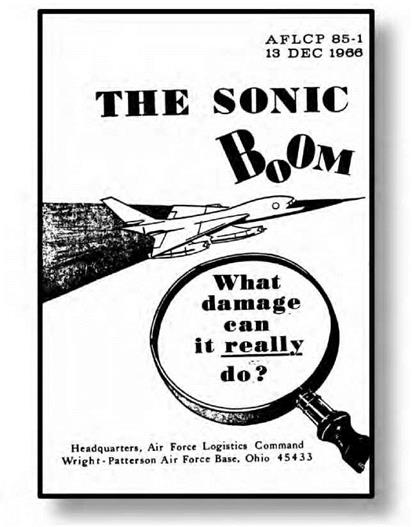A Painful Lesson: Sonic Booms and the Supersonic Transport
By the late 1950s, the rapid pace of aeronautical progress—with new turbojet-powered airliners flying twice as fast and high as the propeller-driven transports they were replacing—promised even higher speeds in coming years. At the same time, the perceived challenge to America’s technological superiority implied by the Soviet Union’s early space triumphs inspired a willingness to pursue ambitious new aerospace ventures. One of these was the Supersonic Commercial Air Transport (SCAT). This program was further motivated by competition from
|
Figure 2. Cover of an Air Force pamphlet for sonic boom claim investigators. USAF. |
Britain and France to build an airliner that was expected to dominate the future of mid – and long-range commercial aviation.[344]











